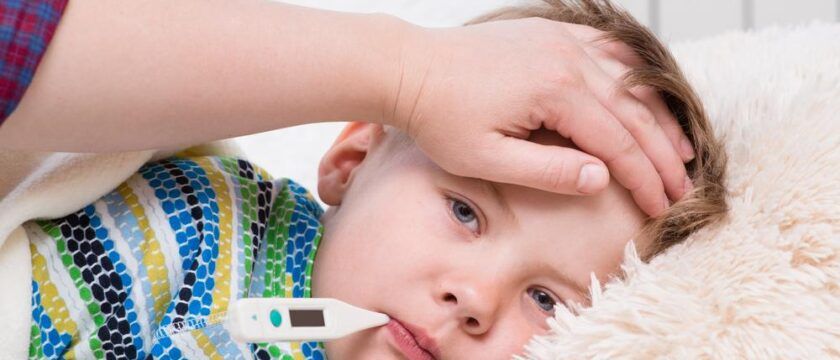Here Is How You Should Use The Fever Temperature Chart
By Catherine M, Staff Editor
Last Updated on March 6th, 2023 / Published on February 27, 2018

Fever is a common condition that is caused by an increase in the body temperature. Children and adults alike are susceptible to suffer from fever because of an infection or other conditions. More commonly, fever is not a serious disease and harmless in most cases. It is nature’s way of boosting up the body’s immune system. Every time there is a fever, the cells and tissues in the body work together towards warding off the harmful bacteria and virus.
Depending on the physical activities carried out by an individual, the body temperature can fluctuate. Younger people are more likely to have high body temperatures. Normally, fever subsides on its own but there may be a need for medication if the temperature remains high for a long period. Moreover, high fever can be a symptom of an underlying medical condition and must be attended to.
One must visit the doctor and undergo a medical examination to rule out any possible serious condition. Usually, the physician will prescribe medicines for a few days and let the fever subside over a period of one or two days. However, if the temperature does not drop to normal, the patient will have to take a blood test. While treating the condition, the doctor uses fever/temperature chart that helps to track the fluctuation in the temperature levels. The patient or the caretaker too will have to use the fever temperature chart to maintain a history. There are various ways that can be used for temperature-taking in the patient.
It is preferable to use a digital thermometer over a mercury-based thermometer as the later poses the risk of breaking while taking the reading. It can thus cause exposure to toxic substances.
Oral – The oral method should not be used for children who are below the age of 7 years as they are unable to hold the thermometer in their mouth for too long. The oral method is known to give a more accurate temperature number and is widely used for by doctors during checkups.
- Clean the instrument with soap and rinse.
- Open the mouth and place the thermometer on the tongue for about a minute.
- After you have heard a beep, take out the instrument and record the time and temperature displayed on a piece of paper.
- Look at the fever/temperature chart and note down if the temperature is still high.
- Store the thermometer after cleaning it once again.
Armpit – This method is not an accurate way of recording temperature; however, it is commonly used to check the temperature in children. Just like the oral method, the armpit method involves the placement of the thermometer in the armpits for a while. Note the temperature on the fever chart provided by the physician. The armpit method must be used in combination with other methods to get an accurate count.
Ear method – Turn on the thermometer and place it in the ear canal for a while. Hold the device firmly before gently removing it out of the canal. Again, use the fever temperature chart to compare the normal number and note down the same. This method gives highly inaccurate results and must not be used unless for babies.
Rectal method – This is the most dependable method to take the temperature of babies or young kids. To begin, clean the thermometer with a disinfectant and cover the tip with some petroleum jelly. Now make the child lie on the stomach with the knees bent. The thermometer must gently be inserted into the anus and held firmly for a short while. Gently pull out the thermometer. The temperature must then be noted on a fever chart. Wash the thermometer before putting it away.
Using a fever temperature chart, you will be able to determine if the fever persists or if it has dropped to normal. Depending on the method you use, the normal temperature will vary. In the oral method, the normal levels on the fever temperature chart range from 35.5 degrees C to 37.5 degrees C. Whereas the normal range in the armpit method will be between 36.5 degrees C to 37.5 degrees C. The normal temperature range in the rectum method is 36.6 degrees C to 38 degrees C and ear method is 35.8 degrees C to 38 degrees C.
Factors to keep in mind when taking temperature
- It is better to always use a digital thermometer for taking oral and rectal temperatures. This kind of thermometer is made of unbreakable plastic and does not harm the human body.
- Space your recordings as closely as you can while using the fever temperature chart as that the doctor can make a more informed assessment of the patient’s illness.
- Use the rectal method if your child is below 2 years.
- Do not use a rectal thermometer to take oral temperature and vice versa.


